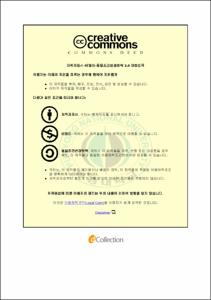영어 양상동사(modality verb)의 한국어 번역유형에 관한 연구
- Abstract
- The purpose of this study is to analyze the patterns of Korean translation of the English modality verb. For this, 160 constructions that is from one popular novel were used to study how to translate English to Korean in the translation.
According to translating the patterns of English modality verbs, they were divided into four types: 'translating into a verb', 'translating into a noun', 'translating into an adverb', 'not translated'. Among them, 'verb pattern' was the most frequent pattern.
Moreover, according to Dixon's classification, there were five translation patterns: 'WANTING','BEGINNING','DECIDING','TRYING','LIKING'.
These five patterns could be subdivided according to the form and features of translation.
Although there were a lot of modality verbs, three interesting results were found. First, the'continue'of modality verb was translated not as an adverb but a noun. Second, the'want'of modality verb was translated with connective endings like'- go', '- ro'. Third, the'need'of modality verb was translated into two different meanings whether the translation of the subject is required or not.
- Issued Date
- 2014
- Awarded Date
- 2014. 2
- Type
- Dissertation
- Publisher
- 부경대학교
- Affiliation
- 대학원
- Department
- 대학원 영어영문학과
- Advisor
- 김은일
- Table Of Contents
- 목 차
Abstract ⅳ
Ⅰ. 서 론 1
Ⅱ.양상 동사(modality verb) 4
2.1 양상동사의 정의 4
2.2 양상동사의 분류 6
2.2.1 Givón의 분류 6
2.2.2 Dixon의 분류 7
Ⅲ. 양상동사의 종류별 번역양상 9
3.1 양상동사의 번역유형 13
3.2 양상동사의 종류별 번역 13
3.2.1 WANTING 유형 19
3.2.2 BEGINNING 유형 22
3.2.3 TRYING 유형 30
3.2.4 DECIDING 유형 34
3.2.5 LIKING 유형 37
3.2.6 기타 39
Ⅳ. 결론 44
병렬언어자료 46
참고문헌 46
- Degree
- Master
- Files in This Item:
-
-
Download
 영어 양상동사(modality verb)의 한국어 번역유형에 관한 연구.pdf
기타 데이터 / 710.75 kB / Adobe PDF
영어 양상동사(modality verb)의 한국어 번역유형에 관한 연구.pdf
기타 데이터 / 710.75 kB / Adobe PDF
-
Items in Repository are protected by copyright, with all rights reserved, unless otherwise indicated.